








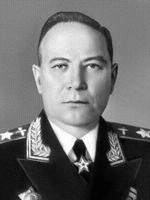
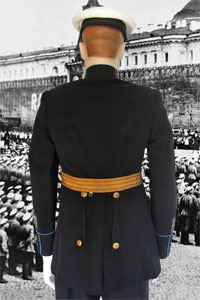
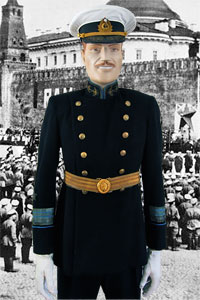
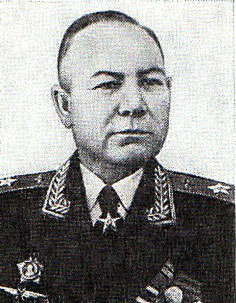
General Zhavoronkov, commander of the entire naval air fleet and architect on the first raid on Berlin by Soviet bombers, stands in his M40 parade tunic in front of a typical military parade.
The back of the parade tunic shows the traditional full cut with buttons that is somewhat reminiscent of naval frock coats of earlier centuries.

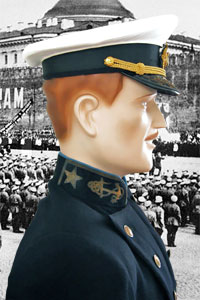
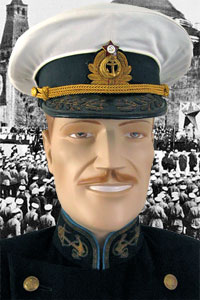
The 1940 model parade tunic was a combination of naval tradition and Soviet ideals. Generals' tunics were no different from senior staff. Shoulder boards had been eliminated since the revolution and rank was indicated by sleeve curls of metal fabric. Admirals and Generals had a star with the Soviet hammer and sickle vs. a plain star for other ranks. Branch specialties were indicated with color piping. Aviation was azure blue.
The side view shows the collar detail of anchor and star which was retained through the design modifications of the parade dress. Piping of colored thread was worn by specialties only. Admiral rank officer's of branch specialties were officially termed Generals.
General Zhavoronkov was a strategic genius with a daring spirit as exemplified by his daring plan to bomb Berlin early in the war, not unlike Doolittle bombing Tokyo. A description of the planning and execution of this mission from the memoirs of Soviet Admiral of the Fleet of the Soviet Union Kuznetsov can be found HERE
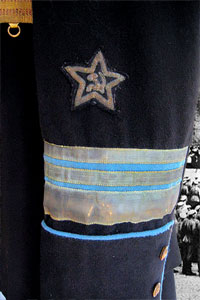
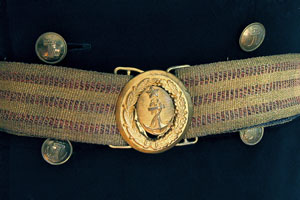
This is the early war style of the Naval parade belt, which could have been worn with a Naval dagger. The buttons are simple naval anchors.
The detail of the cuffs shows the rank curls and piping. Most of the gold paint has come off of the metal fabric and bullion thread. The star is unique for admirals.